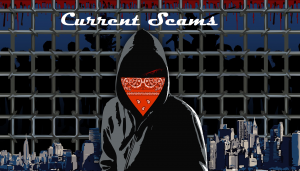Cyber-attacks are growing in prominence every day – from influencing major elections to crippling businesses overnight, the role cyber warfare plays in our daily lives should not be underestimated.
In fact, billionaire investor Warren Buffett claims that cyber threats are the biggest threat to mankind and that they are bigger than threats from nuclear weapons.
We have been compiling a list of relevant cyber-security statistics for you for years now and have decided to update our list with the most alarming cyber security statistics for 2020:
There were more than 1.76 billion records leaked in January 2020 alone.
The year has barely started an it looks to be a big year as far as data leaks is concerned.
Microsoft Office extensions are the most malicious file extensions used by email hackers.
The most malicious file extension used by email hackers in 2018 was Microsoft Office formats. This includes files in the Word, PowerPoint, and Excel formats.
Cisco’s study shows that 38 percent of malicious file extensions are Microsoft Office files. This is followed by archive file formats (.zip and .jar) at 37 percent and PDF files at 14 percent.
Americans are more worried about being a victim of cybercrime than being a victim of violent crime.
Specially, Americans are more worried about identity theft and being hacked:
- 71 percent of Americans are worried about having their personal or financial information hacked.
- 67 percent of Americans are worried about being a victim of identity theft.
By contrast:
- 24 percent are worried about being a victim of terrorism.
- 22 percent are worried about being attacked while driving, 20 percent about being sexually assaulted, and 17 percent about being murdered.
- 7 percent are worried about being assaulted at the workplace
The global average cost of a data breach is $3.6 million — and it keeps increasing every year.
IBM and Ponemon Institute’s Cost of a Data Breach study also found that the average cost of a data breach for organizations worldwide is $3.6 million.
The global cost of cybercrime is expected to exceed $2 trillion in 2020.
This is a four-fold increase when compared to the estimated cost of cybercrime in 2015 — just four years ago.
The number of groups using destructive malware increased by 25 percent in 2018.
Malware attacks is on the rise, but destructive malware more so. Destructive malware is malware that targets computer systems with the goal of destroying them and rendering them inoperable.
Ransomware is expected to cost businesses and organizations $11.5 billion in 2020.
Ransomware attacks aren’t slowing down any time soon.
7 out of 10 businesses are not prepared to respond to a cyber-attack.
The average cost of a data breach is in the millions and that malicious attacks are on the rise, yet a whopping 73 percent of businesses are not ready to respond to a cyber-attack.
Phishing emails are responsible for about 91 percent of cyber-attacks.
9 out of 10 successful cyber-attacks can be traced to a phishing attempt. This is according to research conducted by PhishMe.
After sending 40 million simulated phishing emails to about 1,000 organizations, PhishMe found that 91 percent of cyber-attacks start with a spear phishing email. Worse, these attacks are on the rise.
92 percent of malware is delivered via email.
Email is a top contender when it comes to cyber-attacks, and in line with PhishMe’s study above. Email is responsible for 92 percent of malware.
Mobile malware is on the rise but “grayware” could pose a more dangerous risk to mobile users.
Despite the rise in mobile malware, a more alarming threat however is that posed by grayware; these are apps that appear to be safe but are rife with issues that put users’ privacy at risk. Symantec’s study found that 63 percent of grayware apps leak a device’s mobile number.
Over 76 percent of cyber-attacks are financially motivated.
As the cyberspace gets more sophisticated and intertwined with the real world, the stakes will continue to increase. More cyber-attacks, hacks, and data breaches are motivated by financial purposes than anything else.
Most cyber-attacks are motivated by money; most of these attacks (73 percent) are perpetrated by people outside of the organization, with the majority being carried out by organized criminal groups and 12 percent being carried out by nation-state or state-affiliated actors.
The main cause of data breaches are malicious or criminal attacks and are responsible for 48 percent of all data breaches.
Several factors have been found to be responsible for data breaches. They include:
- Human error (such as negligence on the part of employees or contractors)
- System glitches
- Malicious or criminal attacks (in which a business was intentionally targeted with malicious intent)
IBM and Ponemon’s Institute’s Cost of a Data Breach Study found that not only are malicious or criminal attacks the major cause of a data breach, they are also the most costly. According to the study, 48 percent of data breaches are as a result of malicious or criminal attacks (compared to 27 percent for human error and 25 percent for system glitch).
These attacks commonly involve malware infections, SQL injection, phishing/social engineering, and criminal insiders. These attacks generally cost $157 per user, compared to that from system glitches that costs $131 per user and that from human error that costs $128 per user.
Cryptojacking is one of the more serious cyber threats to watch out for in 2020.
Cryptojacking is when a hacker hijacks your computer and then uses its CPU power to mine cryptocurrencies. Cryptojacking will only rise in 2020, particularly as the cryptocurrency market continues to show new signs of life.









